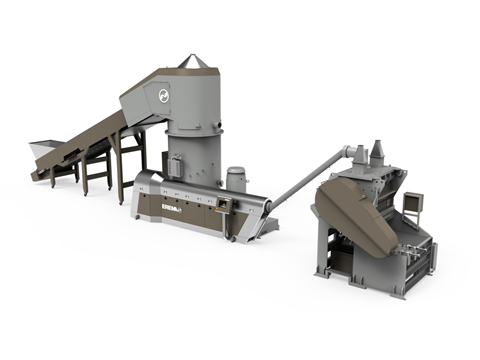
EREMA has announced the launch of its AGGLOREMA recycling system for heavily contaminated post-consumer waste, designed to prepare film rejects with fluctuating moisture levels for chemical or mechanical recycling.
Apparently, AGGLOREMA processes heavily contaminated waste streams with bulk densities as low as 30 kg/m³ and moisture contents of up to 12%, handling up to 2.3 tonnes every hour with room to increase throughput. It combines the EREMA Preconditioning Unit (PCU) with patented Counter Current technology and a specially designed extruder screw.
“It is our job to build machines that support chemical recyclers in the recovery of low-grade waste fractions,” explains Klaus Lederer, business development manager Chemical Recycling at EREMA. “AGGLOREMA closes the gap between highly contaminated, heterogeneous and often thin-film waste streams, and reliable feedstock for the reactor.”
Variations in polymer, geometry, moisture, and other factors of the feed material’s composition are not thought to impact the system’s process control; instead, the material is homogenized, degassed, preheated, and continuously fed into a short extruder without upstream drying.
The partially melted material strand is then fed directly through a melt pipe into the water-cooled melt mill, where it is formed into agglomerates with bulk densities of 280 to 380 kg/m³ and a defined particle size.
“Conventional agglomeration systems quickly reach their limits if the feed material has a low bulk density or fluctuating parameters,” says Lederer. “This is not a problem for AGGLOREMA, however, thanks to the advantages of the PCU and the robust design of the system.”
Downstream drying is thought to reduce the residual moisture to less than one percent, depending on the configuration, so the system is designed to be ‘straightforward and robust’ – lowering process temperature and energy consumption in pursuit of a ‘straightforward and robust’ process.
“This is a particularly robust and energy-efficient system,” Lederer continues. “Our specially designed extrusion technology only inputs as much energy as the material requires.”
Agglomerates made from mixed polyolefin fractions, for example, are recommended for use in the manufacture of simple components.
Alongside the AGGLOREMA system is EREMA’s CHEMAREMA system, which feeds the melt directly into the reactor to prepare materials for chemical recycling. It is designed for long-term robustness in order to withstand the high abrasiveness of contaminated input material.
Several CHEMAREMA machines have been established, offering throughputs of between 2 and 3.5 tonnes per hour; complemented by AGGLOREMA, the system is expected to offer a throughput of up to 4.5 tonnes per hour.
“The specifications for wear resistance and temperature resilience are increasing,” Lederer concludes. “We are working on new materials and extruder screw concepts that can handle these challenges even better. More specific information on this will be presented at the K trade fair in October.”
EREMA will display the AGGLOREMA system at its stand (Hall 9, Stand C09) and Edvanced Recycling Centre (Outdoor area, CE03) at K 2025.
The announcement comes after the reveal of EREMA’s ReadyMac 500 “Heavy Duty”, an addition to its ReadyMac plastics recycling system with an integrated EREMA Laserfilter. This solution is designed to remove impurities such as paper, wood, aluminium, or foreign polymers from plastic melt, especially in heavily contaminated input streams.
Last year, aluminium recycler Speira upgraded its Grevenbroich and Töging plants with four tiltable rotary furnaces to handle heavily contaminated scrap and dross, or ‘low grades’, produced during the melting process. The inclusion of automatic charging and ‘state-of-the-art’ burner technology was anticipated to achieve a higher metal yield.
If you liked this story, you might also enjoy:
The ultimate guide to the Packaging and Packaging Waste Regulation in 2025
How are the top brands progressing on packaging sustainability?
Everything you need to know about global packaging sustainability regulation in 2025
The key to increasing the use of reusable packaging in supermarkets

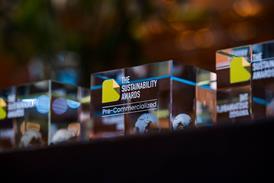

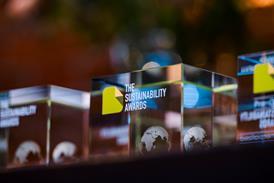
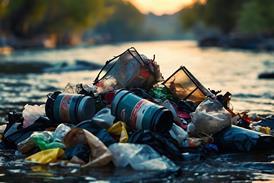
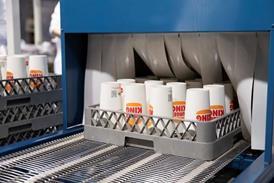






No comments yet